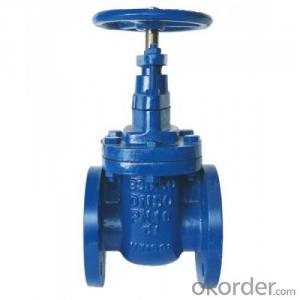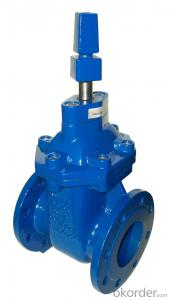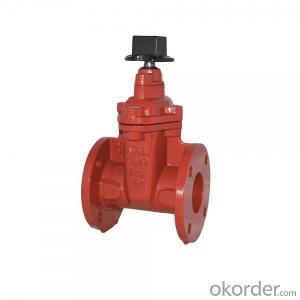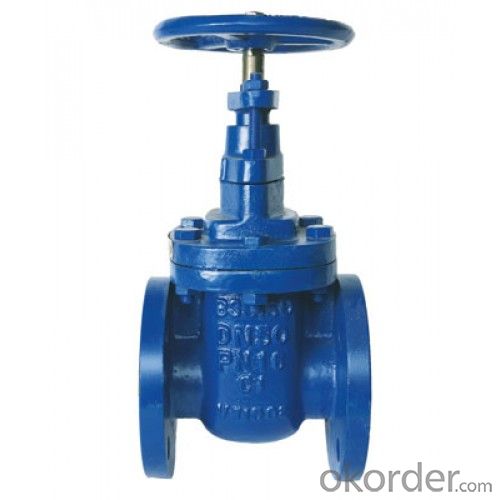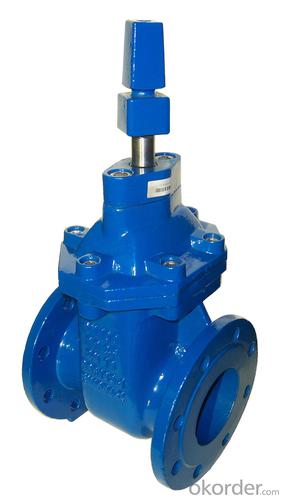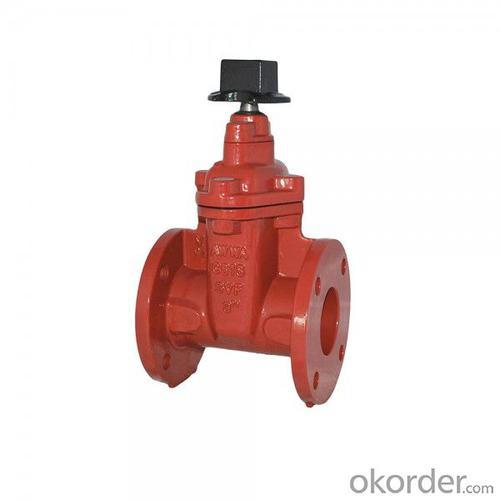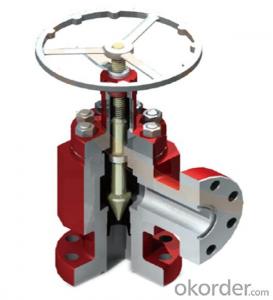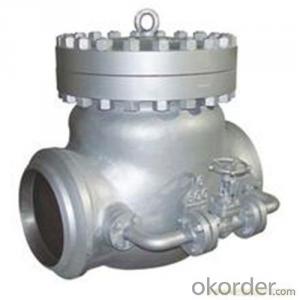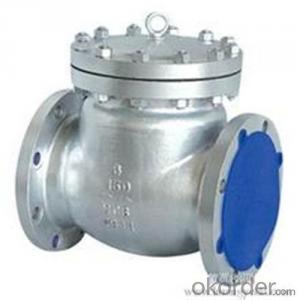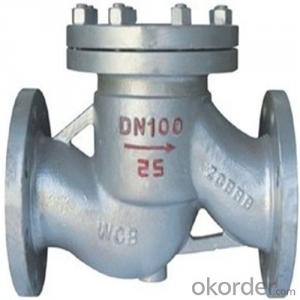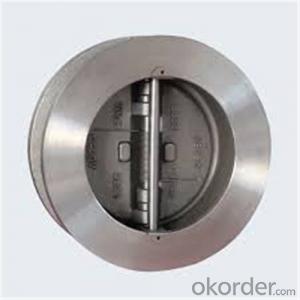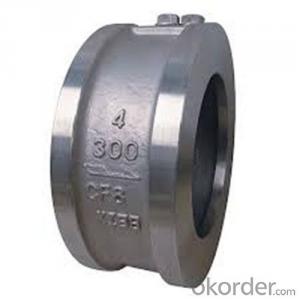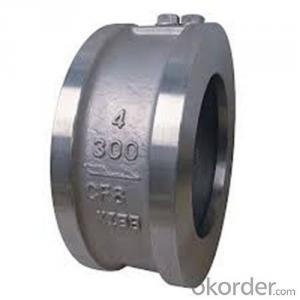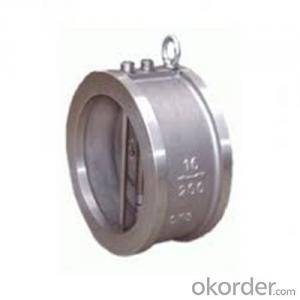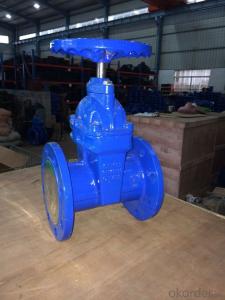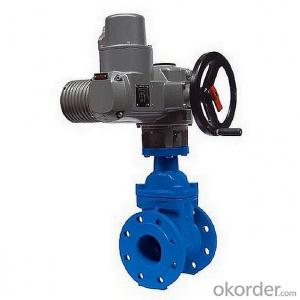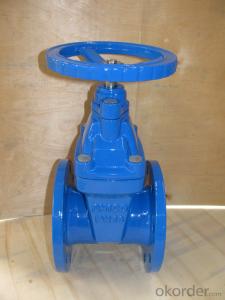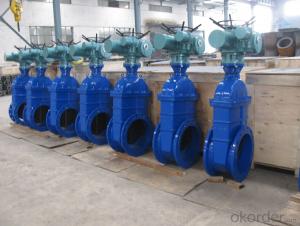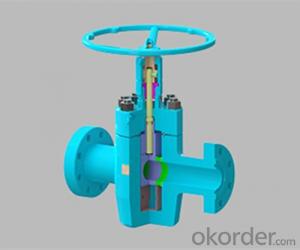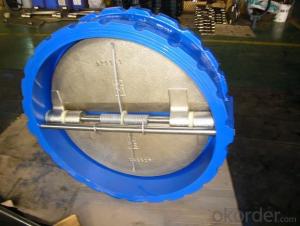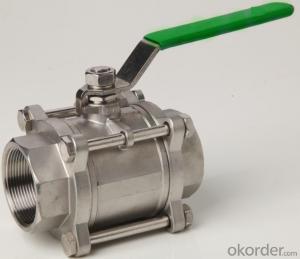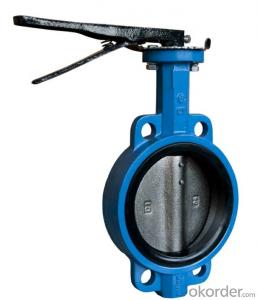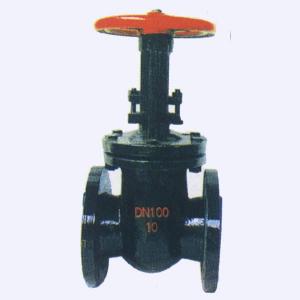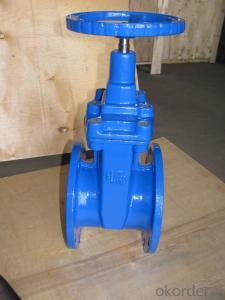Ductile Iron Gate Valve Non-Rising Stem of DIN3352 F4
- Loading Port:
- Tianjin
- Payment Terms:
- TT OR LC
- Min Order Qty:
- 10 unit
- Supply Capability:
- 100000 unit/month
OKorder Service Pledge
OKorder Financial Service
You Might Also Like
Non-rising resilient seated gate valves solve the problem in general gate valves such as leakage, rusting etc. and saves installation space. It is used widely in tap water industry, sewage treatment, shipping construction, petroleum, chemicals, food, pharmacy, textile, electric power, metallurgy and energy system's pipeline to adjust and shut off fluids.
l Replaceable O-ring
l Low torque operation
l Rubber encapsulated wedge
l Clockwise closing direction
l Fusion bonded epoxy coated inside and outside
Specification
Body materials: Ductile Iron
Design standard: DIN3352 F5
Design pressure: PN10/PN16/PN25
Size: DN80mm-DN2000
Connect type: Flanged gate valve
Seal type: Resilient seated gate valve, EPDM+ Ductile Iron
Coating:
Fusion bonded epoxy coated both on the interior as well as the exterior surfaces of the valve, flange surfaces are also fully epoxy coated, blue color.
Application
Potable water, neutral liquids, irrigation, heating and chilled water, fire systems etc, in either above ground or buried service applications and requires minimal maintenance
Feature
This Ductile Iron Resilient Seated Gate Valve is fully compliant to DIN3352 F4. We have light weight type, heavy weight type and even middle weight type for your reference, and these three options design construction of ductile iron will offer a robust and durable extended life performance.
1- Bolted bonnet, full bore: used for larger valves and higher pressure applications.
2- Stem sealed with O-rings: realize zero leakage, could be replace under full pressure.
3- Rubber encapsulated wedge: excellent elastic memory, ensure sealing effect.
4- Blue fusion boned epoxy coated inside and outside: suitable for portable water.
5- Working pressure from -1 to +16 and working temperature from -10 to +80°C
Durable
This valve is suitable for use in a wide range of applications including potable water, neutral liquids, irrigation, heating and chilled water, fire systems etc, in either above ground or buried service applications and requires minimal maintenance. This Resilient Seated Gate Valves have a rated working pressure of 16 Bar. The valves seal 100% leak tight. The waterway is clear, unobstructed and free from pockets. Resilient seated gate valves are fusion bonded epoxy coated both on the interior as well as the exterior surfaces of the valve, flange surfaces are also fully epoxy coated.
Advantage
1- OEM Factory : Professional manufacturer, clients from whole world.
2- High Quality, Competitive Price: Custom is accepted.
3- Complete Service: Long service Life, Fast delivery, Multilingual services.
4- Certificates: ISO9001, CE, NSF, TS, WRAS.
5- Low MOQ: Ready for providing the sample and producing some small orders.
FAQ
Q: Are you manufacturer of trading company? Which kind of valves do you supply?
A: We are a professional manufacturer of butterfly valves, check valve, non-return valves, gate valves, Y-strainer and so on.
Q: Will you do inspection before shipment? Whether Third Party Inspection is available?
A: We have a professional engineer team, so we can offer you the most professional technical support. All valves are tested twice before and after hammer pin to ensure its perfect sealing property and to make sure every valve is ok before ex-factory. TPI is ok but the clients should bear all fees.
Q: What kind of package do you use for these valves?
A: Valves from DN80-DN1400 will be packed in wooden boxes, but valves above DN1400 will be in wooden pallets. If you need wooden boxes for above DN1400, the price may be more expensive.


- Q: What is the International Standard or other acceptable calculation or table for determine the air supply of pneumatic actuator in shutdown valve 6 to 24.Desired answer will be air flow in SCFM.Thank you.
- Shut down valves I've worked with haven't had an 'Air Flow' for their operation. For the smaller valves, they consist of diaphragm operated valves either held open or closed by pneumatic pressure. The air supply at 25psi to give a diaphragm holding pressure of 15 psi, is via a solenoid valve which dumps the air pressure to either open or close the valve depending upon its function. (That of isolating a system or relieving pressure). The solenoid is actuated by a signal from the shut-down system, and the valve is a 3-way unit which isolates the supply air and vents the pressure off the diaphragm. Other SDV's in my experience, are operated in a similar way but are much larger and are operated by a pneumatic air cylinder and piston with air supplied at 100 psi. Others encountered are ... MOV's...Motor Operated Valves that can be automatically operated from the shutdown system, or Operated Remotely from a safe distance (ROV's).
- Q: My Rodeo 96 has a P0440 code (Evaporative Emissions Control System problem). I have visually inspected the hoses on the engine; double-checked the gas cap is tight; but have not looked at the fuel tank sensors and connections. I've noticed that the EVAP canister purge valve solenoid is switching non-stop (click-click-click noise without stopping). Is it the expected behavior?
- P0440 Isuzu Rodeo
- Q: What is motor operated valve (MOV) please answer me if anybody have experiance in instrumentation filed, please explain overhauling and troble shooting
- This Site Might Help You. RE: What is motor operated valve (MOV) please answer me if anybody have experiance in instrumentation filed? What is motor operated valve (MOV) please answer me if anybody have experiance in instrumentation filed, please explain overhauling and troble shooting
- Q: how to reset control valve with electron pneumatic positioner of (make) Instrument and system.?
- Control valves come with a spring g which keeps the valve in either the open or closed position, when there is no air pressure applied to the diaphragm of the valve actuator. For this reason, I'm unsure what you mean with 'reset the valve. The electro/pneumatic positioner is a device which applies the air pressure required to open (or close) the valve to the position the electric signal from the controller is calling for, rather than using an I/P transducer to output a 3 to 15 PSIG air pressure to the diaphragm. Sometimes an actuator requires more pressure than the normal 3 to 15 psig to move a sticky valve to the correct position. Edit your question to detail what is occurring, and I or someone else can give you a proper answer. TexMav
- Q: OK, I would like to run my shorty headers open on my Camaro, but I have two questions.1. I heard valve damage may occur because cold air gets in there. Why isn't this the case with straight pipe exhaust, doesn't the cold air travel to the valves in that case anyway?2. Right now with my headers to off road y pipe I have 2 o2 sensors to throw the check engine light off, and it has worked. If I run open headers, will they still work?
- Cold air doesn't get in to damage, but the valve needs a bit of back pressure. The valve will burn, crack or check, or the valve seat will do the same. The common damage is a small w crack on the valve face, which then leaks compression gases into the hot header resulting in erratic backfire and misfiring. The lack of back pressure can be compensated for by richer mixture, or grinding a wider seat. Get used to lapping in valves, or find some high performance sodium valves and stelite seats. You could run dumps, and only open the headers for short blasts.
- Q: Hey,I have a 1/2 diameter pipe and I want to place a valve on it. I need a valve that can be electronically controlled so the water flow can be started and stopped on demand. I plan to achieve this by connecting the valve to a 'relay' that will be connected to an ardunio or PIC that will programmed to determine when the water is to flow or stop. That make sense? So my question does anyone know a suitable type of valve? I've no experience with valves and there are so many types so I don't know where to start!I would be grateful for any suggestions :)Thanks!
- I okorder /
- Q: I have rented a house and the irrigation timer only has wires of one zone.It goes to a single valve then out to a big round cover with 6 zone pipes coming out of it. What the heck kind of set up is this?does it do a mechanical rotation inside that cover? the zones only come on one at a time but every time I turn it on I get a different zone as they are all Zone 1 on the timer.
- This Site Might Help You. RE: I only have one irrigation valve for 6 zones? I have rented a house and the irrigation timer only has wires of one zone.It goes to a single valve then out to a big round cover with 6 zone pipes coming out of it. What the heck kind of set up is this?does it do a mechanical rotation inside that cover? the zones only come on one at a time but...
- Q: ex: 4 stroke 16 valve engine
- The intake and exhaust valves in a four stroke engine are timed to allow air intake on the the intake stroke, both closed on the compression and power stroke and the exhaust valve open on the exhaust stroke. The valves on a two stroke engine are generally automatic reed type check valves that allow for an intake stroke and close for the compression and power stroke.
- Q: Is there a relationship?
- Yes it does cause severe anemia and it is a risk factor for the development of a gastrointestinal bleeding, but patients usually lack a source of active bleeding. The stenosis can cause acquired Von Willebrand Disease by breaking down coagulation factor 8.This can happen because of the sheer force of blood across a calcified aortic valve..The patient also developes angiodysplasia of the colon. It is a condition where the fragile blood vessels stretch which results in the severe anemia from the loss of blood . Patients can have recurrent GI bleeds.With the turbulent blood flow red blood cells are mechanically damaged. Patients require supplements of vitamin k prior to surgery. After surgery this problems resolves it self..What medications are you taking now? I just read the other responses to your question, 9.1 is low and will continue to decrease because of the AS,. Given the problems associated with AS it should not be ignored just because someone saw a lower value under different circumstances. Are you being assessed for surgery on your valve? Do you see a cardiologist regulary? Did you have a echocardiogram done recently?I hope they will continue to keep a close eye on it, take care, Donna
- Q: Ok i dont know much about cars so if anybody could help out with this id appreciate it. Do i need to take my car in to get the PCV valve replaced or can i buy it and have it done in my driveway?Thanks....
- Positive Crankcase Ventilation (PCV) Valve Removal Detach the PCV hose from the PCV valve. CAUTION: Do not pull the PCV valve from the valve cover without first rotating the PCV valve. Failure to follow this instruction may result in damage to the PCV valve. Remove the PCV valve. Rotate the PCV valve counterclockwise. Pull the PCV valve from the valve cover. Installation To install, reverse the removal procedure.
Send your message to us
Ductile Iron Gate Valve Non-Rising Stem of DIN3352 F4
- Loading Port:
- Tianjin
- Payment Terms:
- TT OR LC
- Min Order Qty:
- 10 unit
- Supply Capability:
- 100000 unit/month
OKorder Service Pledge
OKorder Financial Service
Similar products
Hot products
Hot Searches
Related keywords
